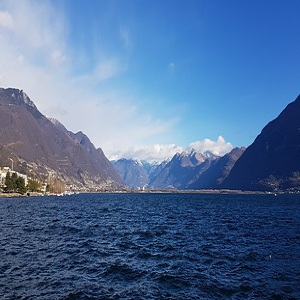Spatial-temporal study of cluster 5 picocyanobacteria and exopolymeric microgels in Lake Maggiore

Accepted: 15 December 2022
DOC: 0
HTML: 21
All claims expressed in this article are solely those of the authors and do not necessarily represent those of their affiliated organizations, or those of the publisher, the editors and the reviewers. Any product that may be evaluated in this article or claim that may be made by its manufacturer is not guaranteed or endorsed by the publisher.
Authors
In the oligotrophic Lake Maggiore, the majority of picocyanobacteria are phycoerythrin-bearing Synechococcus-type belonging to cluster 5 (Pcy-5). Their distribution was followed in a seven-year study along a depth gradient from the surface down to 350 m in relation to Transparent Exopolymer Particles (TEP), Total Organic Carbon (TOC), Chlorophyll-a (Chl-a) and water temperature. Pcy-5 abundances exhibit pronounced inter-annual variability, showing years of high numerical abundances as well as years with low numbers. In the upper 20 m, Pcy-5 peaks at around 10-15 m and then progressively decreases. Here, the Pcy-5 presence has been outlined for the first time in the deep layers of a deep lake, thus opening an interesting discussion on these organisms’ survival mechanisms in the absence of the light needed to perform photosynthesis. The relation of Pcy-5 with extracellular microgels was significant in autumn, when peaks of both variables were observed. In the other seasons, TEP was correlated with temperature and Chl-a, indicating the autochthonous origin of this fraction.
How to Cite

This work is licensed under a Creative Commons Attribution-NonCommercial 4.0 International License.
PAGEPress has chosen to apply the Creative Commons Attribution NonCommercial 4.0 International License (CC BY-NC 4.0) to all manuscripts to be published.


 https://doi.org/10.4081/aiol.2022.11043
https://doi.org/10.4081/aiol.2022.11043



